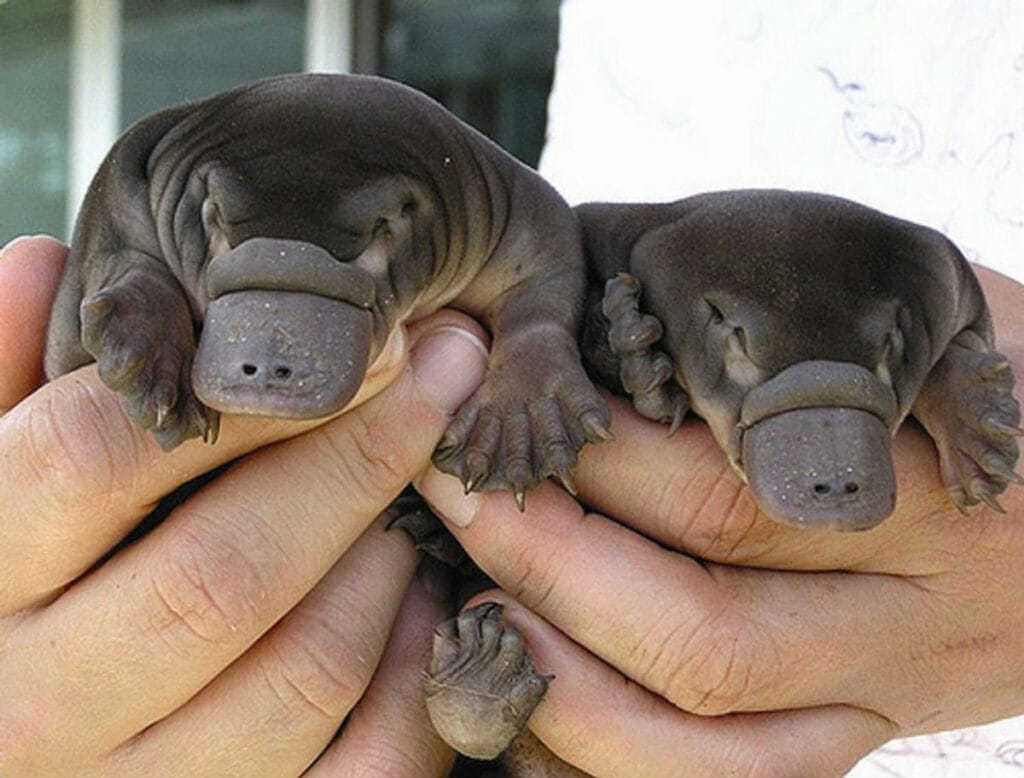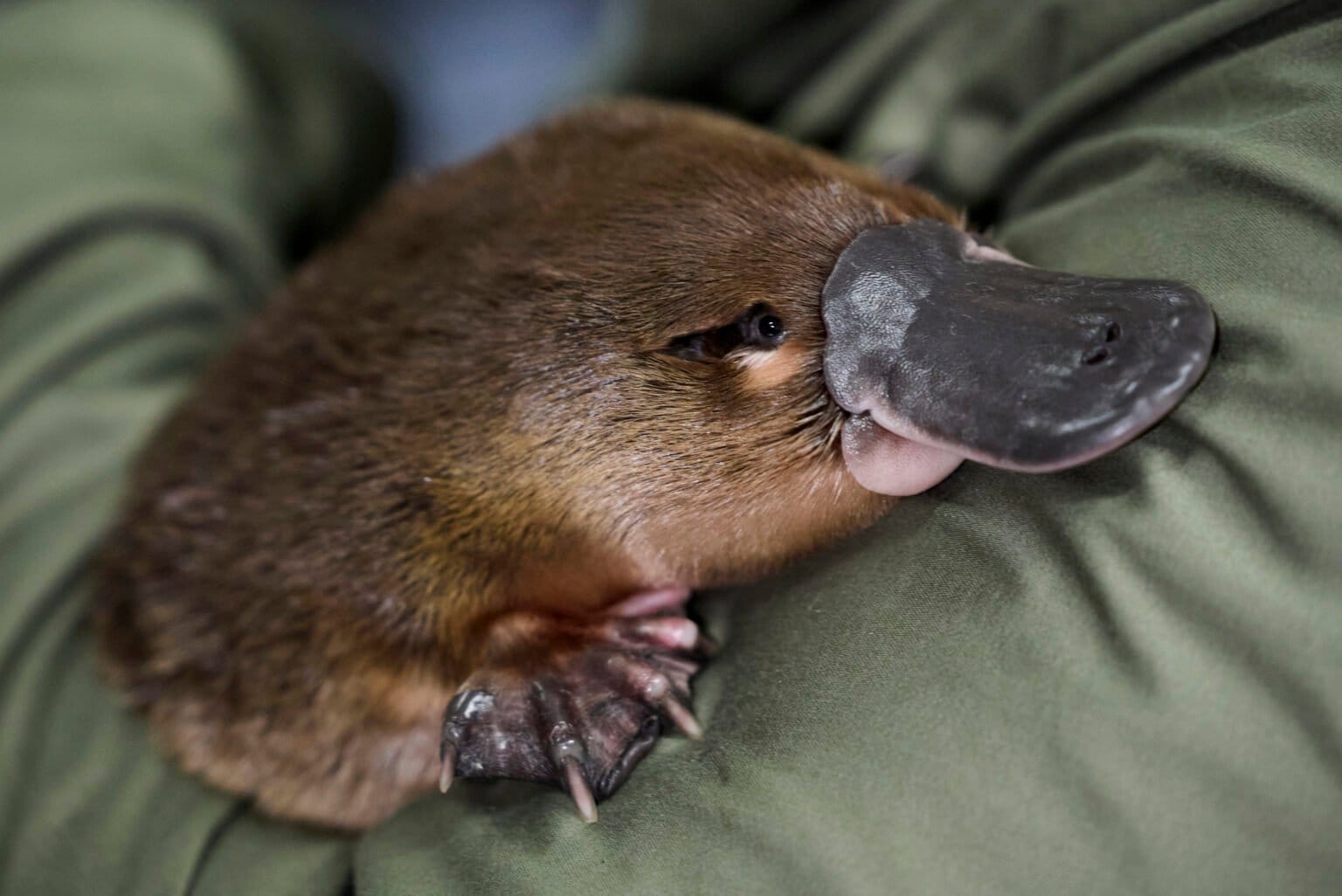A popular story about the platypus says that this animal allegedly simultaneously possesses the genes of as many as three classes of vertebrates: reptiles, birds and mammals. We decided to check whether this statement is correct from a scientific point of view.
Media claim, as if “biologists found out"that the platypus has genes from birds, reptiles and mammals at the same time." like this same information Can meet on various entertaining websites, in selections entertaining facts, in social networks, blogs And Internet quizzes. Reptile genes like claim the authors of such publications are responsible for the fact that “females lay eggs and males produce poison” in platypuses. The genes of birds are supposedly do for platypuses, electroreception is possible - it allows them to search for prey in muddy muddy bodies of water. Such receptors, capable of detecting electricity in the environment, are located on the edges of the animal’s beak (which is very similar to the location of the “compass” in many migratory birds).” In addition, on the Internet pay attention to the fact that “these mammals possess the vitellogenin gene, which is usually found in birds and reptiles. It is this gene that is responsible for the production of protein in the egg, which feeds the platypus embryo.”
Contrary to popular belief, genes do not describe the state of an organism and its relationship to a particular class of animals (for example, there is no gene that would mean “being a bird”). Rather, they are responsible for certain characteristic processes or skills (for example, the ability to produce milk for feeding cubs or, conversely, the ability to lay eggs). Therefore, the formulation “have a bird gene” or “have a reptile gene” is generally not very correct. So, genetically man and chicken identical approximately 60%, which does not mean that a person has bird genes.
The complete genome of the platypus was deciphered in 2021, however partial transcripts published since 2004. This animal attracts the attention of scientists due to the structural features of its body. In the description of the 2021 study mentioned above, which is referenced in many of the publications reviewed, the genome of the platypus was compared, among others, with the genome of the human, echidna, mouse, possum, chicken and green lizard. In the conclusions of the article there was no wording that the platypus has the genes of birds and reptiles - the scientists only clarified how evolution proceeded using the example of the acquisition or loss of certain genes.
Together with echidnas, the platypus belongs to the order Monotremes. Its name describes peculiarity representatives of the species included in the order - their intestines, excretory and reproductive systems open into a single cloaca, which makes them similar to amphibians, reptiles, birds and some species of fish (sharks, rays and lungfish).
Besides this, platypus lays eggs, but feeds the cubs with milk, does not have teeth in adulthood (instead, grinds food with horny plates), produces poison and senses prey using electrical signals. It is the possession of such unusual characteristics that most likely led to allegations in the media that the platypus has genes from other classes of mammals.
The platypus really has one functional (VTG2) and one partial (VTG1) copy of the gene responsible for the production of glycolipoprotein vitellogenin, which in turn plays an important role in the formation of the yolk of the egg. Reptiles and birds, for example, have three copies of the VTG gene and are able to lay eggs, while honey bees have no vitellogenin at all. answers for the distribution of labor and social connections. However, the presence of such a gene does not yet make it possible to say that a creature has the genes of a bird, insect or reptile; man also has partial sequence of this gene, like some other mammals (for example, possums).
However, due to the fact that platypuses have an incomplete set of these genes, they cannot provide the yolk of the egg with the necessary nutrients for the entire period of development of the baby. can't. Unlike bird eggs, platypus eggs spend more time inside the mother's body than outside it - the platypus carries eggs for about a month and incubates them for only 10 days.

At the same time, note Scientists have sequenced the genome, platypuses have a gene that encodes milk proteins secreted during lactation. In addition to the three copies characteristic of all mammals, platypuses have two additional ones: CSN2 and CSN3, whose functions are still unknown to scientists. And although the mammary glands of female platypus available, they do not have nipples - milk flows onto the mother’s belly through enlarged pores.
The presence of a beak, like the absence of teeth, also does not automatically make a living creature a bird. Some mammals, whose membership in this class is not disputed, also do not have teeth - for example, anteaters And pangolins. Platypus beak not similar avian - it is stretched between the premaxillary bone and the lower jaw and represents It is not a hard formation, but a soft and leathery one, on the surface of which there are thousands of receptors that make it possible to detect prey. The presence of electroreception is also inherent and other mammals - the Guiana dolphin and the echidna.
The ability to produce venom is most common in reptiles, arthropods, insects and fish, but is also found in mammals. Yes, some species are poisonous shrews, slittooth, vampire bats and even one type of primate - fat (aka slow) lori.
However, platypus venom includes includes defensins (mammalian proteins for destroying bacteria and viruses) and a hormone called glucagon-like peptide-1 (GLP-1), which are also characteristic of mammals, and not insects, spiders or snakes.
The list of amazing features of platypuses is not limited to this. How found out scientists, it has ten sex chromosomes instead of the usual two for mammals: XXXXXXXXXX in the female and XYXYXYXYXY in the male, which are connected in a ring structure. No other mammal (or bird or reptile) has such a structure; it is found only in some invertebrates and plants. However, based on this fact, it never occurred to anyone to write news that platypuses turn out to possess plant genes.
Thus, the platypus is indeed an extremely unusual representative of mammals, but journalists were too free in interpreting the results of the work of scientists who sequenced its genome. They only indicated that the animal has some genes that are fully functioning in representatives of other classes, which only confirms Darwin’s theory of the evolution of species, but does not indicate that platypuses directly inherited them from birds or reptiles. Moreover, even humans have some of the genes mentioned in a reduced state, which, however, is not equivalent to the fact that a person has, for example, the genes of reptiles.
Cover image: Australian Geographic
If you find a spelling or grammatical error, please let us know by highlighting the error text and clicking Ctrl+Enter.






